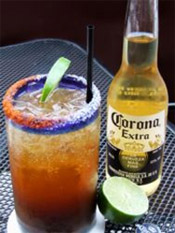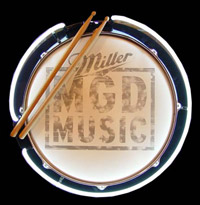 OK, I have a plan.
OK, I have a plan.
I’ve written several times that I think I should try Miller Chill. I’ve been seeing advertisements for six months (New Mexico was a test market) and sales are rockin’. And today I received a press release from an agency that represents Corona with recipes for Michelada, Michelada Roja and Chelada. (Miller Chill is based on the “cheleda” – with lime and salt already included.)
So I see an organized blind tasting in the near future. Since we are headed East it might be a few weeks – or perhaps I’ll rope friends and relatives in Massachusetts into taking the test.
If you check out Rate Beer, Beer Advocate or founding brother Jason Alström’s rant this isn’t going to seem like such a good idea. Guess we’ll find out.
The press release is another sign that Mexican breweries are feeling the impact of Miller Chill.
The Michelada, and variations such as the Michelada Roja and the Chelada, are classic Mexican beer cocktails typically made with an authentic Mexican beer, such as Corona, Pacifico or Negra Modelo, and varying combinations of lime, Worcestershire sauce, hot sauce and salt, served over ice. The lime and spices complement each other and provide a spicy, flavorful kick to the traditional Mexican beer. Recipes vary throughout Mexico and the origins of the michelada are not widely known, although most agree the name came from “mi chela helada,” slang for “my cold beer.”
Corona recommends the following recipes:
Michelada
Recipe courtesy Adobo Grill in Chicago (and pictured above)
– Chile Piquin
– Salt
– Juice of ½ large fresh lime
– 1 oz. Sangrita**
– 12 oz. bottle Corona
– Garnish: fresh lime wedge
Salt the rim of a large, frosted glass with the coarse salt and chile piquin. Fill the glass halfway with ice and then add the lime juice. Add sangrita and top with beer. Garnish with a lime wedge.
** Sangrita is a tomato-based drink with hints of orange and lime juices, chiles and peppers. It can be purchased at Mexican specialty stores.
Michelada Roja
– Coarse salt
– Juice of 1 large fresh lime
– Dash to taste of Worcestershire, hot sauce, soy sauce
– 2 ounces tomato juice or Clamato juice
– 12 oz. bottle Corona or Pacifico
– Garnish: red and yellow cherry tomatoes on a pick
Salt the rim of a large tall glass with the coarse salt. Fill the glass with ice and then add lime juice and Worcestershire, hot sauce and soy as desired, and then add the tomato juice. Top with beer – serve any extra beer on the side. Garnish with tomatoes on a pick.
Chelada
– Coarse salt
– Juice of 1 large fresh lime
– 12 oz. bottle Negra Modelo or Corona
– Garnish: fresh lime wedge
Salt the rim of a large tall glass with the coarse salt. Fill the glass with ice and then add the lime juice. Top with beer – serve any extra beer on the side. Garnish with a lime wedge.
While you are waiting for the results you might want to check out some of the experiments Donavan Hall conducted earlier this year.
 The specially designed
The specially designed  Miller Genuine Draft is partnering with the Rock and Roll Hall of Fame to sponsor music artist interviews and performances. The series is called “
Miller Genuine Draft is partnering with the Rock and Roll Hall of Fame to sponsor music artist interviews and performances. The series is called “